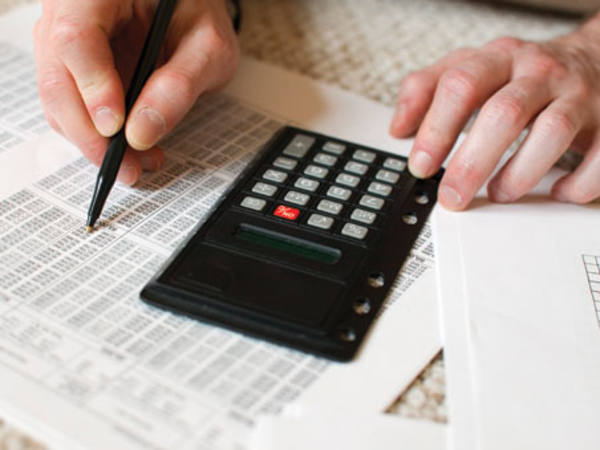- Inflation creates a ‘double whammy’ for retirement planning
- The best time to put money into your pension is now
- Selecting the right investment strategy makes a big difference to your living standards in retirement
Inflation is wreaking havoc on retirement planning because, as costs increase, it can be tempting to maintain your living standards and cut back on less pressing needs such as savings and pension contributions. In November 2022, a Bank of England survey found that higher-income households are especially likely to keep buying the same things even as they become more expensive and save less to compensate.
But the cost of retirement has also gone up, suggesting that we should be saving not less but more than before. For example, earlier this month Pensions and Lifetime Savings Association (PLSA) research suggested that a couple now needs £54,500 a year to fund a comfortable retirement – a 9.6 per cent increase on last year’s figure.
It goes without saying that you should only cut your pension contributions as a very last resort. But should you increase them, and how do you make sure that you are setting aside enough to retire in comfort?
The early bird
Jason Hollands, managing director at Evelyn Partners, says starting early is crucial. “The first pound you save is the most valuable of all, as it has more time to grow and therefore people starting early can get massively ahead of the game,” he says. “Those who only begin later in their lives face a massive game of catch-up and, even with eye-watering contribution levels, may never get there.”
According to research by investment platform interactive investor, a couple who retire at age 66 with the full state pension would need a £310,000 pot per person to live until 85 in a ‘comfortable’ way, as defined by the PLSA standards. This is assuming investment returns of 5 per cent a year and a 2 per cent annual rate of inflation, including fees, and using drawdown.
If you start saving when you are 25, you could build up that amount by the time you are 65 by paying a total of £235 a month into your pension, funded by your own and your employer’s contributions, and tax relief. In order to achieve the same result, somebody who starts at 35 would need to put aside £410 a month.
This also means that while the best time to put more money into your pension was perhaps 10 or 20 years ago, the second best time is now. The contributions you make now will go a much longer way than those you might make in five years’ time.
If you are in a workplace pension scheme and increase your contributions to it, your employer might also contribute more. The minimum contribution to a workplace pension is 8 per cent of your pay, of which 3 per cent comes from your employer and 5 per cent from you. But some companies offer pension contribution matching up to a higher percentage, say, 8 per cent – so a 16 per cent contribution in total.
According to Claire Trott, divisional director of retirement and holistic planning at St James’s Place, people tend to contribute too little to their pension. “It is safe to say that many of us don’t pay enough because it seems a long way off,” she says. “This means that putting in as much as you can realistically afford is generally the best idea.”
Investment platform Hargreaves Lansdown (HL.), meanwhile, estimates that only a third of the highest-earning households are currently on track for a comfortable retirement income.
As with any other type of investment, as well as saving early, the golden rule is to save regularly. When the market is down, it can be tempting to stop contributing and wait for the storm to clear. But especially in times of high volatility, you risk missing out on the recovery days, which has consequences for the eventual size of your retirement savings.
Investment strategy
Your regular contribution amount has a massive impact on your living standards in retirement. For example, a couple could achieve a ‘moderate’ living standard with pots worth £120,000 each. They could build these up by just contributing £90 a month each for 40 years, whereas to each accumulate the £310,000 pots needed for a comfortable living standard they would need to contribute £235 a month.
But your investment strategy also matters. For a couple whose investments only returned 4 per cent a year, instead of 5 per cent as set out above, to achieve a comfortable living standard in retirement each partner would need to make monthly contributions over 40 years of £315 to accumulate £330,000 each.
As long as you still have a long investment horizon, you should focus on investment growth and avoid moving away from equities too soon. Even if the market crashes, there is plenty of time for it to recover before you need access to your pension. Younger adults, says Hollands, should invest “heavily, even exclusively, in equities during their earlier years to grow the value of their capital”.
If you invest through a workplace pension scheme, check that the strategy via which you are invested matches your retirement plans and that your retirement age is correctly set. A default strategy might derisk your pot too soon and lose you precious returns.
Inflation also impacts pension contributions, so if you contribute a fixed monthly amount you may want to adjust it. If you contribute a percentage of your wage it might also fall short: according to Office for National Statistics data, between September and November 2022 average wages were down by 2.6 per cent in real terms compared with 2021. But, in the long term, your wages are more likely to keep up with inflation or even grow if you get promoted, and your pension contributions will follow.
When you retire, your withdrawals are likely to increase with inflation, making your strategy all the more important. “Without the real growth potential provided by equities, a pension pot may struggle to grow in line with or ahead of inflation, which means the investor could exhaust their pension midway through retirement or find that income withdrawals gradually decline in real terms,” says Hollands.
Retirement goals
Ultimately, how much you need in retirement depends on a number of variables, including your retirement strategy. The figures above focus on drawdown strategies. But annuity rates have become more attractive with the increase in interest rates. However, wealth manager Quilter calculates that in order to buy an annuity offering a comfortable income that increases by 3 per cent every year, a couple would need two pots worth about £399,000 each.
Your goals in retirement naturally play a big part. “How much money you need in retirement is really determined by what you want to do when you get there and what other assets you have,” says Trott. “If you own your own home, don’t want to travel and have low outgoings then your requirements will be significantly less than someone paying rent, travelling a lot and with an extravagant lifestyle.”
The PLSA standards assume that you own your house mortgage-free and are entitled to the full state pension. The standards are different if you live in London, and do not account for long-term care you might need later in life or if you want to leave some of your pension to your children.










